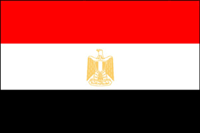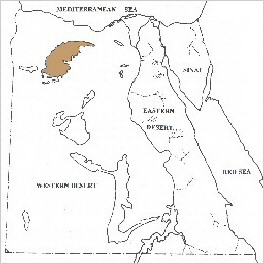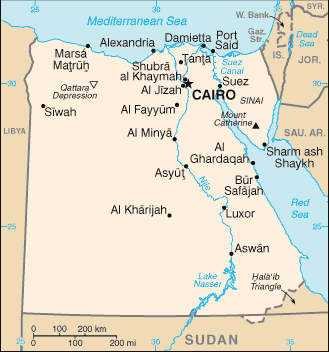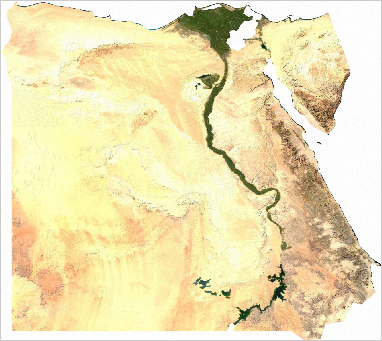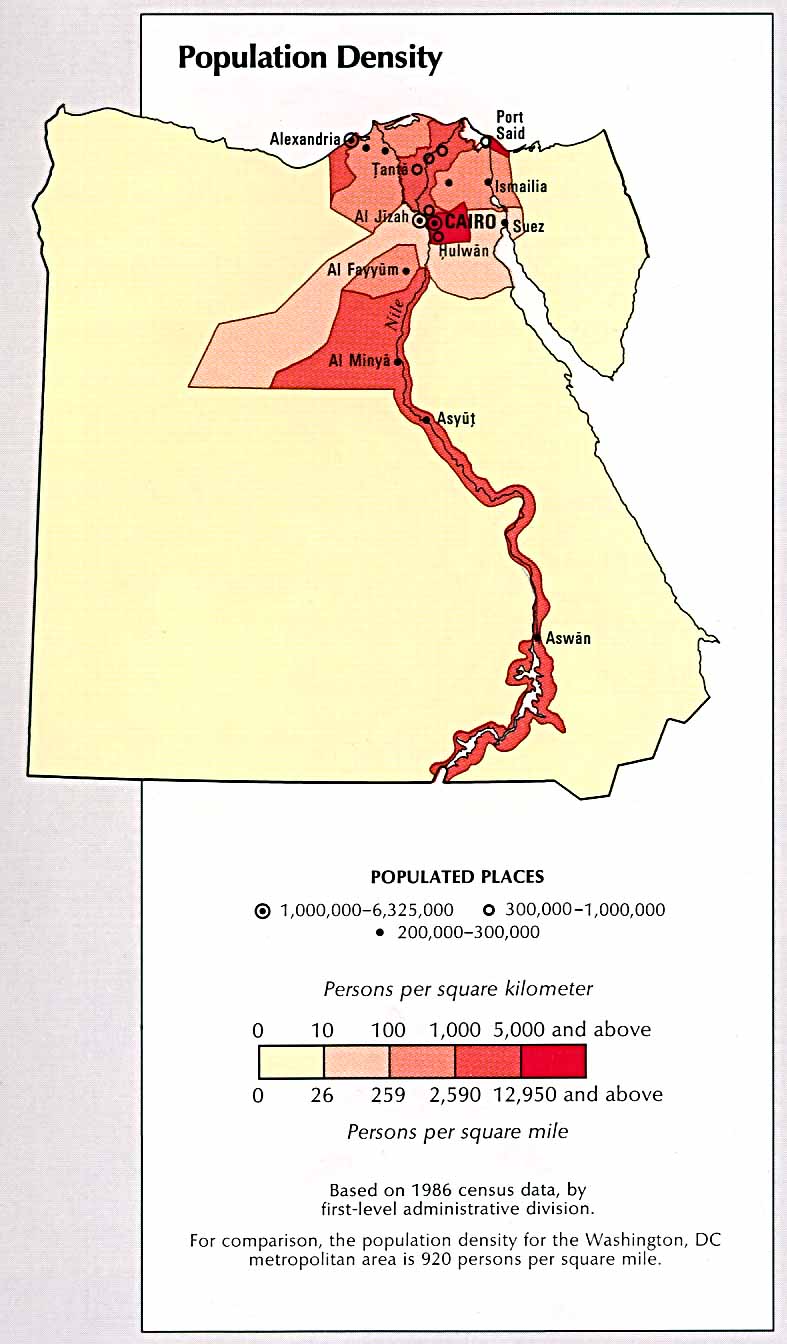|
|
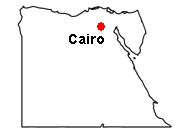 |
| back to top | ||||
|
Population. The cheetah has disappeared from most of its former range in the northern part of the Egyptian Western Desert. Its entire population has been reduced to what appears to be few individuals confined to a highly inaccessible area in the northern and western parts of the Qattara Depression. These individuals appear to be essentially nomadic, roaming over a vast area of the desert in search of prey. Cheetah tracks have been seen and at least 5 animals were seen around the Sitra water source in the Qattara Depression in the western and northwest parts of the country, and north of Qara Oasis. In 1994, tourism was banned in Marsa Matruh Province (where the Qattara depresion is situated) for five years to protect wildlife from poaching. A proposed cheetah-gazelle sanctuary in northwest Qattara has been prepared. The cheetah is totally protected, although enforcement is likely to be inadequate. Principal Threats. Restricted habitat, possible conflict with nomadic herdsmen, habitat disturbance, reduction in prey and insufficient numbers of cheetah to sustain a population. |
|
|
||
|
|
||||
|
||||
|
Background: The regularity and richness of the annual Nile River flood, coupled with semi-isolation provided by deserts to the east and west, allowed for the development of one of the world's great civilizations. A unified kingdom arose circa 3200 B.C., and a series of dynasties ruled in Egypt for the next three millennia. The last native dynasty fell to the Persians in 341 B.C., who in turn were replaced by the Greeks, Romans, and Byzantines. It was the Arabs who introduced Islam and the Arabic language in the 7th century and who ruled for the next six centuries. A local military caste, the Mamluks took control about 1250 and continued to govern after the conquest of Egypt by the Ottoman Turks in 1517. Following the completion of the Suez Canal in 1869, Egypt became an important world transportation hub, but also fell heavily into debt. Ostensibly to protect its investments, Britain seized control of Egypt's government in 1882, but nominal allegiance to the Ottoman Empire continued until 1914. Partially independent from the UK in 1922, Egypt acquired full sovereignty following World War II. The completion of the Aswan High Dam in 1971 and the resultant Lake Nasser have altered the time-honored place of the Nile River in the agriculture and ecology of Egypt. A rapidly growing population (the largest in the Arab world), limited arable land, and dependence on the Nile all continue to overtax resources and stress society. The government has struggled to ready the economy for the new millennium through economic reform and massive investment in communications and physical infrastructure. |
||||
| |
back to top |
|
Area: total: 1,001,450 sq km; land: 995,450 sq km; water: 6,000 sq km Climate: desert; hot, dry summers with moderate winters Terrain: vast desert plateau interrupted by Nile valley and delta Natural resources: petroleum, natural gas, iron ore, phosphates, manganese, limestone, gypsum, talc, asbestos, lead, zinc Land use: arable land: 2.92%; permanent crops: 0.5%; other: 96.58% (2005) Irrigated land: 34,220 sq km (2003) Natural hazards: periodic droughts; frequent earthquakes, flash floods, landslides; hot, driving windstorm called khamsin occurs in spring; dust storms, sandstorms
|
|
|
Environment - current issues: agricultural land being lost to urbanization and windblown sands; increasing soil salination below Aswan High Dam; desertification; oil pollution threatening coral reefs, beaches, and marine habitats; other water pollution from agricultural pesticides, raw sewage, and industrial effluents; very limited natural fresh water resources away from the Nile, which is the only perennial water source; rapid growth in population overstraining the Nile and natural resources Environment -
international agreements: party
to: Biodiversity,
Climate Change, Climate Change-Kyoto Protocol, Desertification, Endangered
Species, Environmental Modification, Hazardous Wastes, Law of the Sea, Marine
Dumping, Ozone Layer Protection, Ship Pollution, Tropical Timber 83, Tropical
Timber 94, Wetlands |
|
| |
back to top |
|
Population: 78,887,007 (July 2006 est.) Age structure: 0-14 years: 32.6% (male 13,172,641/female 12,548,346); 15-64 years: 62.9% (male 25,102,754/female 24,519,698); 65 years and over: 4.5% (male 1,510,280/female 2,033,288) (2006 est.) Median age: total: 24 years; male: 23.6 years; female: 24.3 years (2006 est.) Population growth rate: 1.75% (2006 est.) Infant mortality rate: total: 31.33 deaths/1,000 live births; male: 32.04 deaths/1,000 live births; female: 30.58 deaths/1,000 live births (2006 est.) Life expectancy at birth: total population: 71.29 years; male: 68.77 years; female: 73.93 years (2006 est.) Total fertility rate: 2.83 children born/woman (2006 est.) HIV/AIDS - adult prevalence rate: less than 0.1% (2001 est.) HIV/AIDS - people living with HIV/AIDS: 12,000 (2001 est.) HIV/AIDS - deaths: 700 (2003 est.) Ethnic groups: Egyptian 98%, Berber, Nubian, Bedouin, and Beja 1%, Greek, Armenian, other European (primarily Italian and French) 1% Religions: Muslim (mostly Sunni) 90%, Coptic 9%, other Christian 1% Languages: Arabic (official), English and French widely understood by educated classes Literacy: definition: age 15 and over can read and write; total population: 57.7%; male: 68.3%; female: 46.9% (2003 est.) |
|
| |
back to top |
|
Data Code: EG Government type: republic Independence: 28 February 1922 (from UK) Legal system: based on English common law, Islamic law, and Napoleonic codes; judicial review by Supreme Court and Council of State (oversees validity of administrative decisions); accepts compulsory ICJ jurisdiction, with reservations Political pressure groups and leaders: despite a constitutional ban against religious-based parties, the technically illegal Muslim Brotherhood constitutes Hosni MUBARAK's potentially most significant political opposition; MUBARAK tolerated limited political activity by the Brotherhood for his first two terms, but moved more aggressively since then to block its influence; civic society groups are sanctioned, but constrained in practical terms; trade unions and professional associations are officially sanctioned |
|
| |
back to top |
|
Economy - overview: Occupying the northeast corner of the African continent, Egypt is bisected by the highly fertile Nile valley, where most economic activity takes place. In the last 30 years, the government has reformed the highly centralized economy it inherited from President NASSER. In 2005, Prime Minister Ahmed NAZIF reduced personal and corporate tax rates, reduced energy subsidies, and privatized several enterprises. The stock market boomed, and GDP grew about 5% per year in 2005-06. Despite these achievements, the government has failed to raise living standards for the average Egyptian, and has had to continue providing subsidies for basic necessities. The subsidies have contributed to a growing budget deficit - more than 10% of GDP each year - and represent a significant drain on the economy. Foreign direct investment remains low. To achieve higher GDP growth the NAZIF government will need to continue its aggressive pursuit of reform, especially in the energy sector. Egypt's export sectors - particularly natural gas - have bright prospects. GDP - real growth rate: 5.7% (2006 est.) GDP - composition by sector: agriculture: 14.7%; industry: 35.5%; services: 49.8% (2006 est.) Labor force: 21.8 million (2006 est.) Labor force - by occupation: agriculture: 32%; industry: 17%; services: 51% (2001 est.) Unemployment rate: 10.3% (2006 est.) Population below poverty line: 20% (2005 est.) Agriculture - products: cotton, rice, corn, wheat, beans, fruits, vegetables; cattle, water buffalo, sheep, goats Industries: textiles, food processing, tourism, chemicals, pharmaceuticals, hydrocarbons, construction, cement, metals, light manufactures Industrial production growth rate: 5.1% (2006 est.) |
|
|
Exports: $24.22 billion f.o.b. (2006 est.) Exports - commodities: crude oil and petroleum products, cotton, textiles, metal products, chemicals Exports - partners: US 13%, Italy 9.2%, Spain 7.7%, Syria 5.5%, France 4.9%, Germany 4.8%, Saudi Arabia 4.7%, UK 4% (2005) Imports: $35.86 billion f.o.b. (2006 est.) Imports - commodities: machinery and equipment, foodstuffs, chemicals, wood products, fuels Imports - partners: US 10.5%, Germany 7%, China 6.4%, France 6.3%, Italy 5.7%, Saudi Arabia 4.8% (2005) Currency (code): Egyptian pound (EGP) Exchange rates: Egyptian pounds per US dollar - 5.75 (2006), 5.78 (2005), 6.1962 (2004), 5.8509 (2003), 4.4997 (2002) |
|
| |
back to top |
|
Telephone system: general
assessment: large system; underwent extensive upgrading during
1990s and is reasonably modern; Internet access and cellular service are
available Radio broadcast stations: AM 42 (plus 15 repeaters), FM 14, shortwave 3 (1999) Television broadcast stations: 98 (September 1995) Internet country code: .eg Internet hosts: 2,254 (2006) Internet users: 5 million (2005) |
|
| back to top |
|
Marker L., Malouf J. and Malouf A. 1999. Appendix 2: The status of the wild cheetah in its range countries. In: 1999 International Cheetah Studbook. Saleh M.A., Helmy I., Giegengack R. 2001. The cheetah, Acinonyx jubatus (Schreber, 1776) in Egypt (Felidae, Acinonychinae) Hunter M. 2004. The Great and Lesser Wild Cats of Egypt. |
